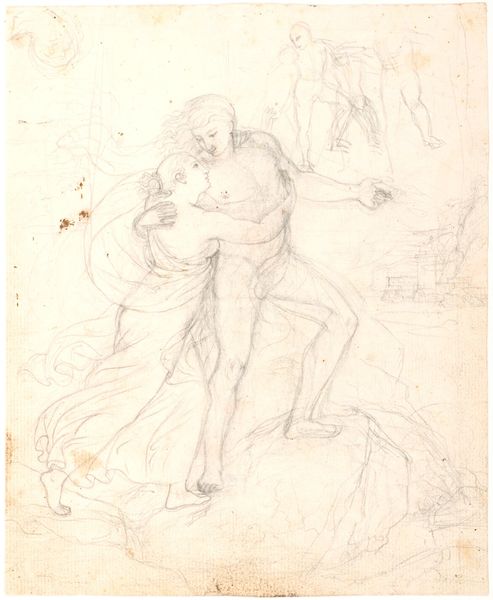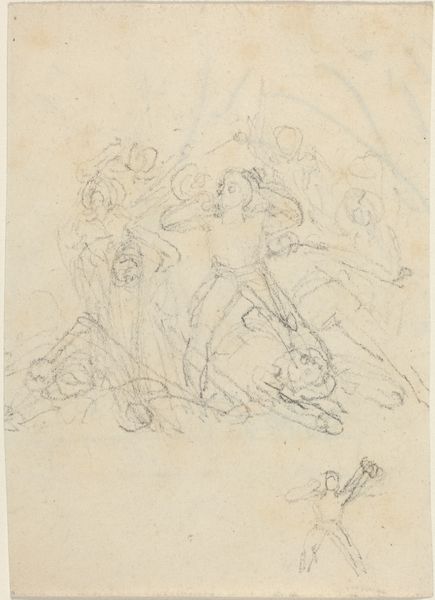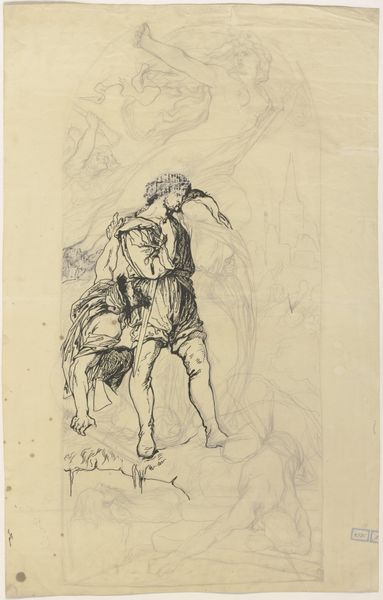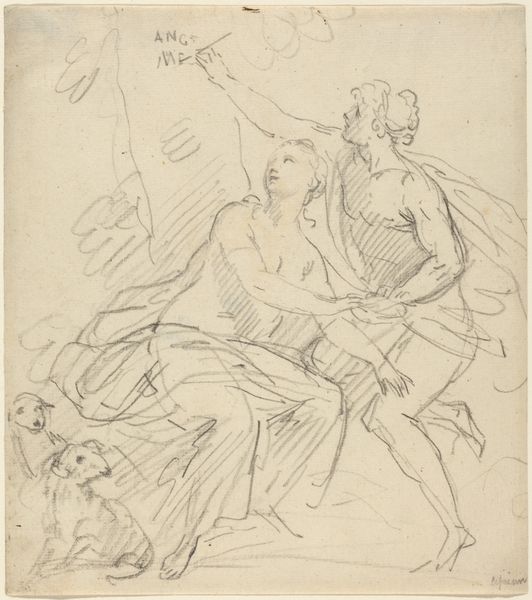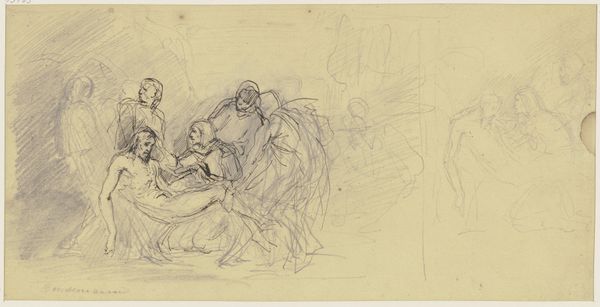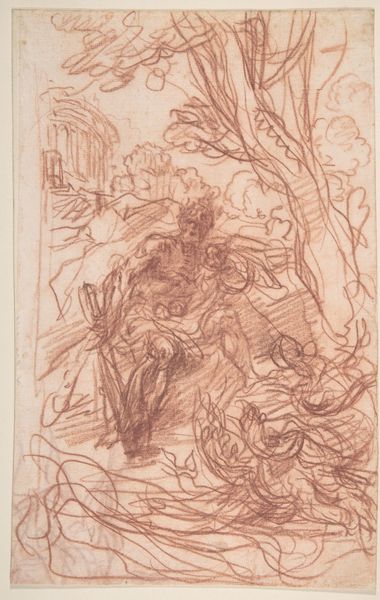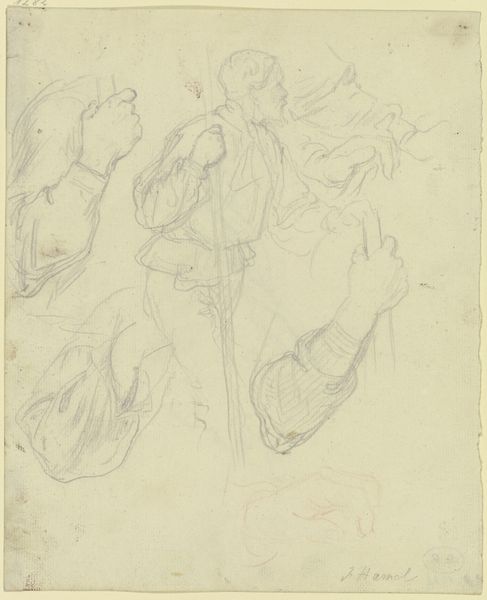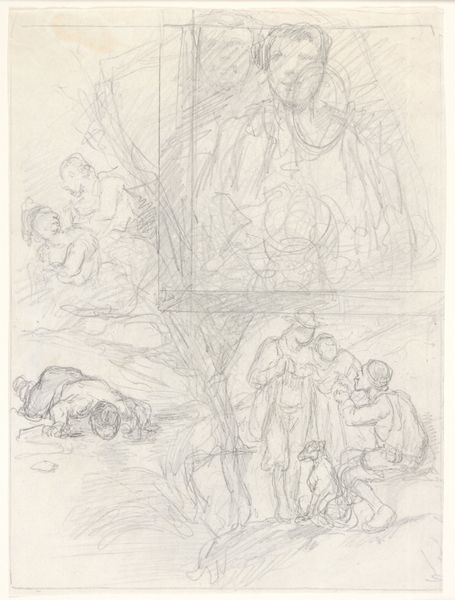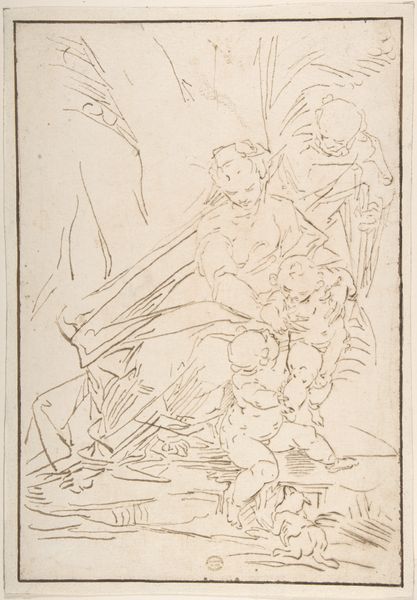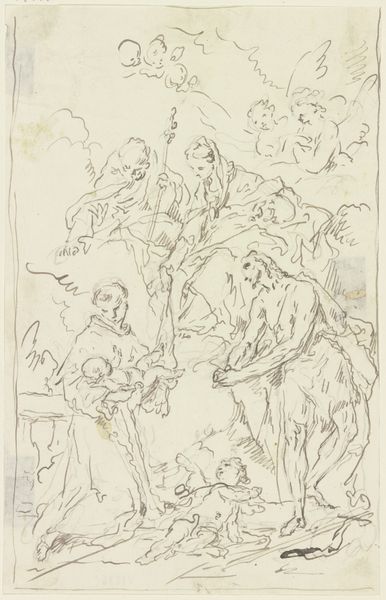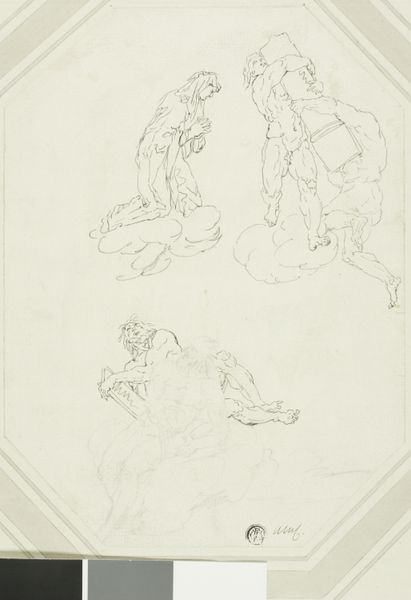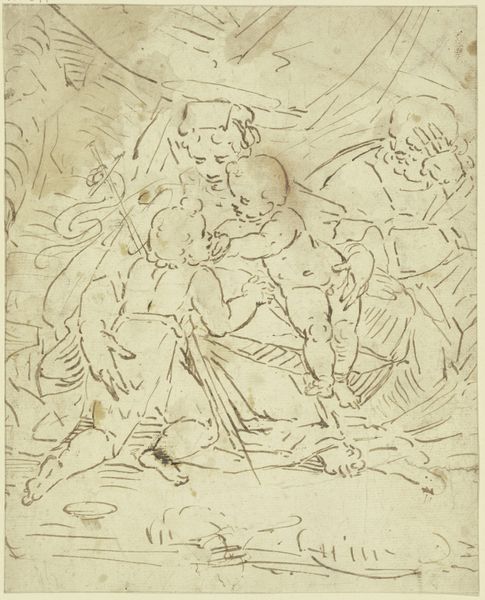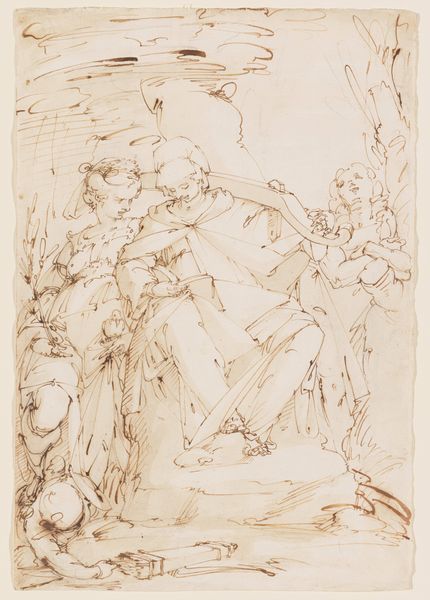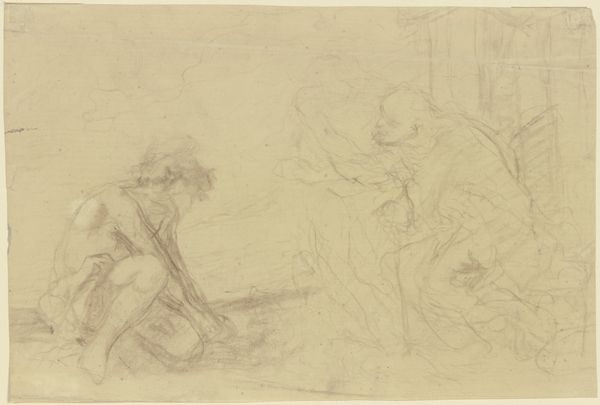
drawing, ink, pen
#
drawing
#
narrative-art
#
baroque
#
ink painting
#
pen sketch
#
figuration
#
ink
#
pen
#
genre-painting
Dimensions: overall: 34.3 x 22.8 cm (13 1/2 x 9 in.)
Copyright: National Gallery of Art: CC0 1.0
Editor: This is Paul Troger's "Two Beggars with Their Dog," a pen and ink drawing from around 1728. It feels…almost unsettling in its stark depiction of poverty. The figures are rendered with such delicate lines, yet their plight is so clearly evident. What strikes you most about this piece? Curator: The directness of the image is certainly arresting. For me, it raises crucial questions about representation. How does Troger, as a likely privileged artist, portray the marginalized? The Baroque period often depicted the poor, but usually in ways that reinforced social hierarchies, either through idealization or caricature. Does this image challenge or perpetuate those norms? Editor: I hadn't thought of it that way. I guess I assumed that simply depicting them was an act of empathy, a way of making them visible. Curator: It’s more complicated than that. Whose gaze are we seeing through? Is it a compassionate observation, or a detached, even exploitative, one? Consider the level of detail in their worn clothing, their gaunt faces – is this detail born of genuine understanding, or a kind of aesthetic fascination with poverty? How do you feel about the depiction of the dog? Does the artist attempt to sentimentalize poverty via the connection between humans and animals? Editor: The dog *does* tug at your heartstrings a little, doesn't it? Maybe it's a deliberate appeal to the viewer's emotions. Are you suggesting the artist might be aware of the power dynamics at play in the image? Curator: Precisely. Even if Troger intended sympathy, we must consider the artwork's potential to exoticize or romanticize hardship, unintentionally reinforcing existing power structures. What do *you* make of the landscape elements? Are they intended to isolate the figures from the wider populace? Editor: I hadn't even registered the landscape. Now that you point it out, they feel very detached and alone. I guess there is so much more to unpack than initially meets the eye. Curator: Indeed. Analyzing the social context pushes us to consider whose stories are told, how they're told, and what effect that has on our understanding of the world, both then and now.
Comments
No comments
Be the first to comment and join the conversation on the ultimate creative platform.
